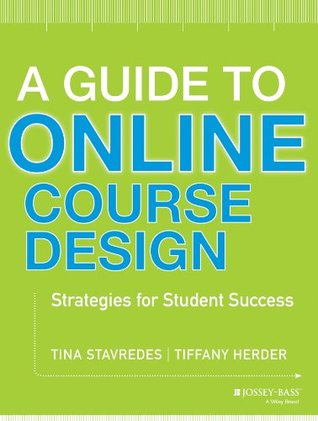More on this book
Kindle Notes & Highlights
Read between
March 7 - May 3, 2020
With the rapid growth of online education, the focus has become the quality of learning outcomes from online courses. Reports show higher attrition rates for learners taking online courses so there is a growing need to understand factors that contribute to learner persistence in an online environment. The focus of this book is on the design of online courses that support learners' ability to persist in the online environment. Throughout the book, we refer to important concepts and strategies to support learner persistence.
Billings's (1988) model focused on correspondence courses; however, there are a couple of important insights that helped drive some key design elements in the effectiveness of today's online courses. First, Billings talked about how learners who submit assignments early on in a correspondence course often persist longer than those who wait a couple of months to submit their assignments. This demonstrated that structured activity deadlines in a course, especially early on, would help learners continue to persist.
This makes a case for designing an online course experience that provides a high level of support to help learners successfully complete the course.
Develop During the develop phase, you will craft the instruction for your assessments and course activities as well as additional context information such as unit objectives, introductions, and a syllabus. You will also develop scaffolding to support learners so they can successfully complete course activities and demonstrate achievement of the learning outcomes. Finally, you will build your online course in your online tools or learning management system (LMS). Key questions you will address include the following: How will you clearly communicate your expectations for learners' performance
...more
Evaluate In the final phase, evaluate, you will conduct a final evaluation of your online course and consider strategies for continually evaluating the course after implementation. Key questions you will address include the following: How well are learners performing on the learning outcomes? What does learners' performance on assessments and activities tell you about the effectiveness of the course design? What barriers and challenges are learners running into throughout the course? What improvements could you make to improve learner persistence and successful achievement of course learning
...more
Focusing on learning outcomes in the design of a course helps provide a systematic way to ensure the course supports the achievement of skills, knowledge, and attitudes needed in the real world. Creating outcomes for the course that are achievable given your learners' previous academic preparation and performance can help learners persist because the content and activities support greater learner success. Developing course outcomes that help learners establish a knowledge and fact base necessary for application of key concepts as well as providing opportunities to connect learning with
...more
The Carnegie unit is the common means of calculating learner contact hours. It is based on a sixteen-week term and is equal to a minimum of three hours of work per week for a semester. The three hours of work per week includes 1 hour of lecture plus two hours of homework (or three hours of lab), which equates to sixteen hours of lecture and thirty-two hours of homework or forty-eight hours of work over the term per credit. For a three-credit course, you would have 144 hours of workload (48 × 3). Your program more than likely has calculated contact hours for the curriculum, so you will want to
...more
You will then divide the total hours over the number of weeks the course will be delivered to get your workload target for each week.


